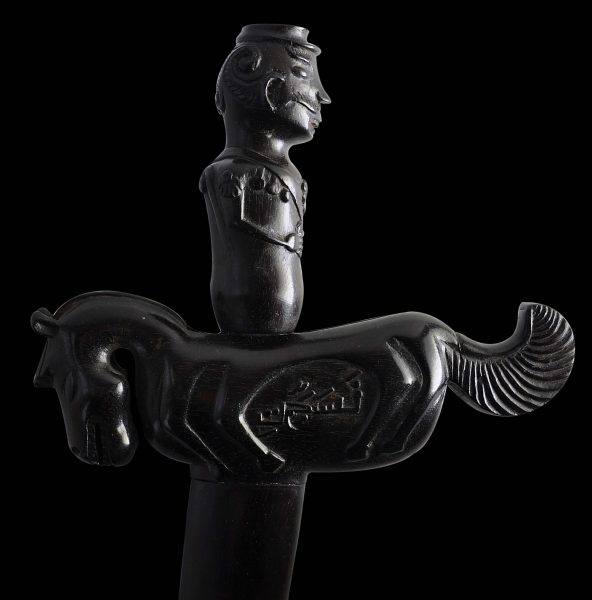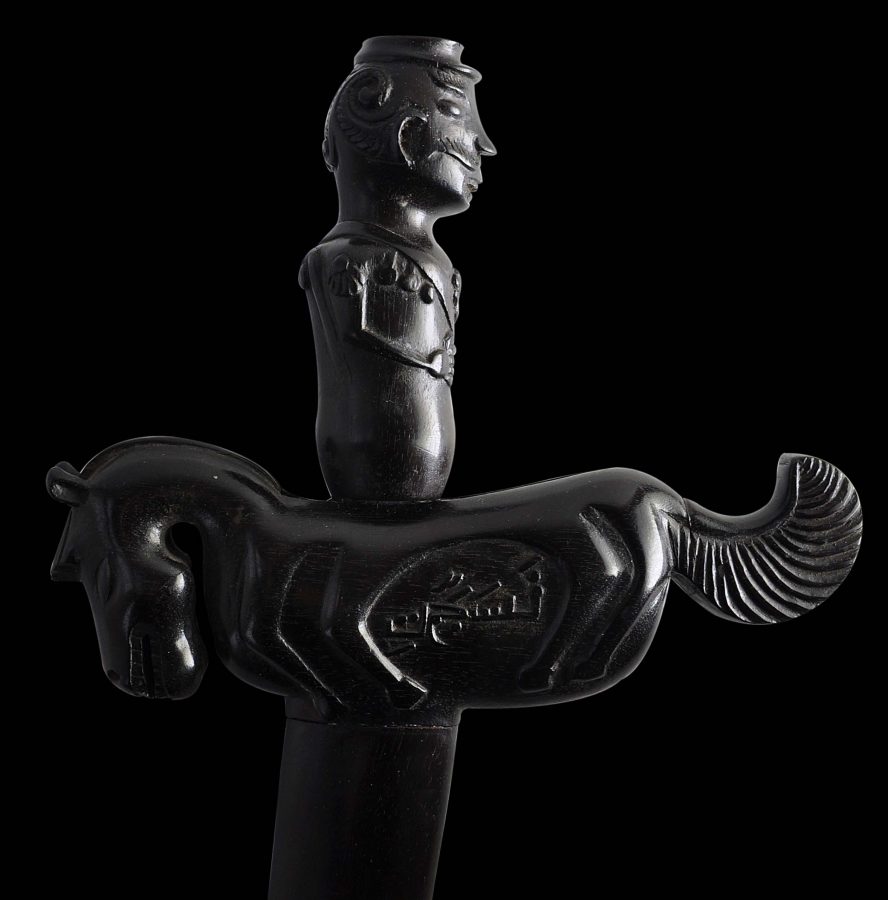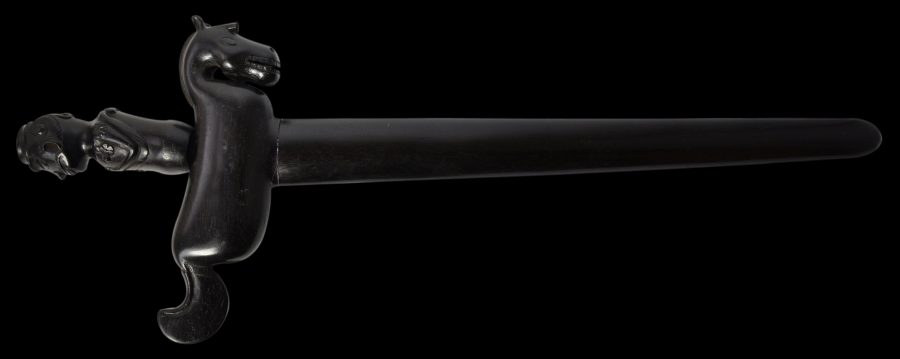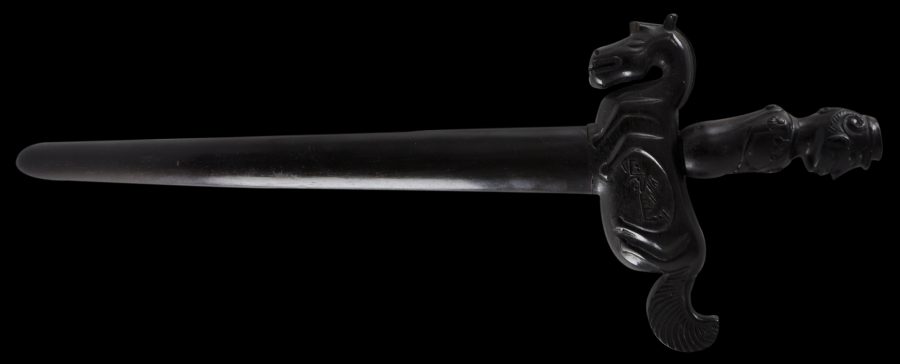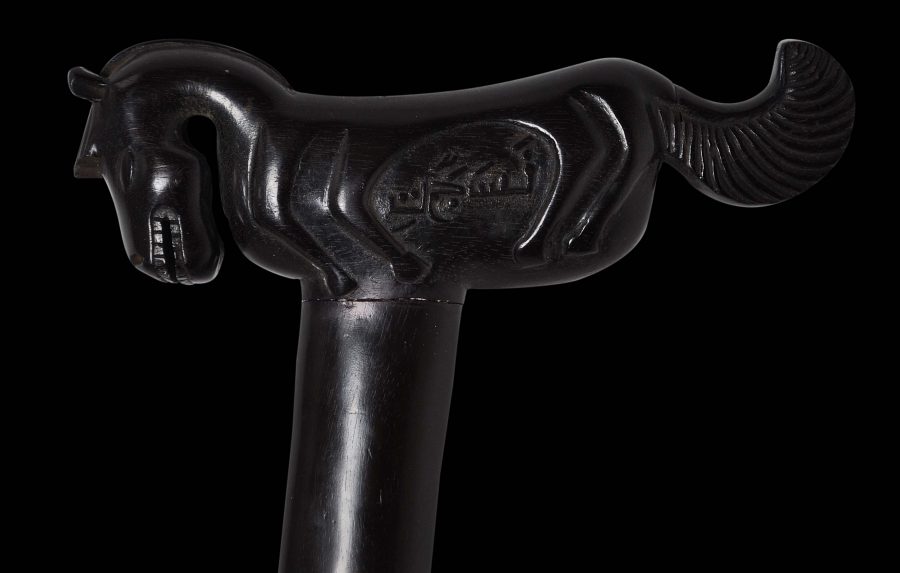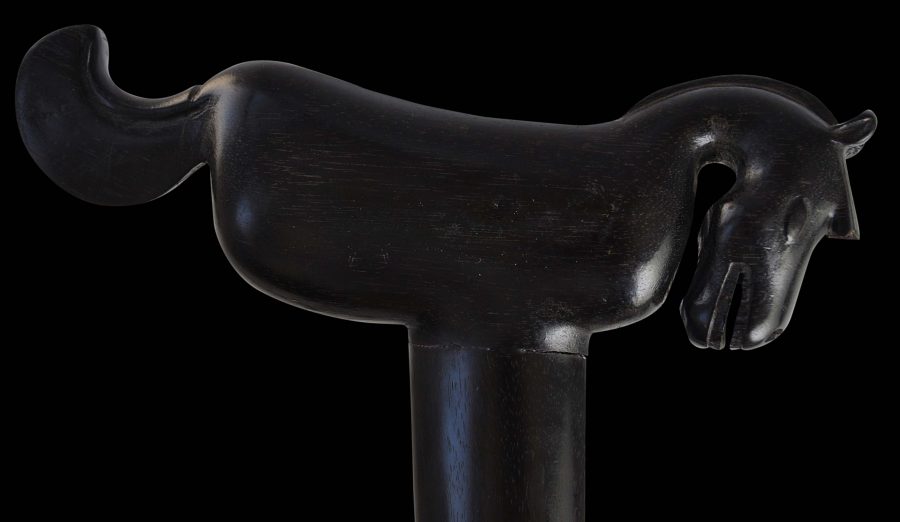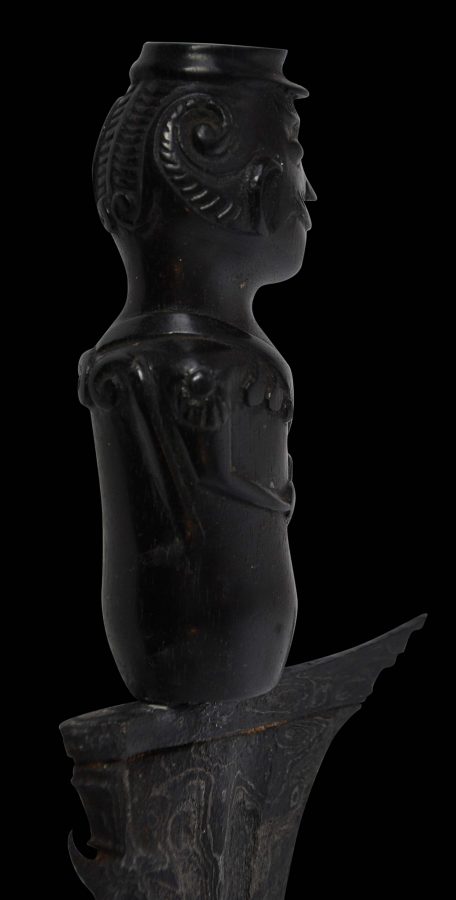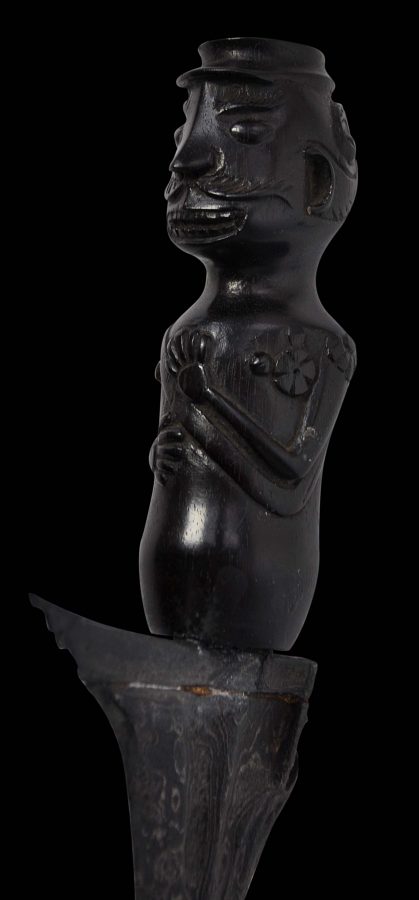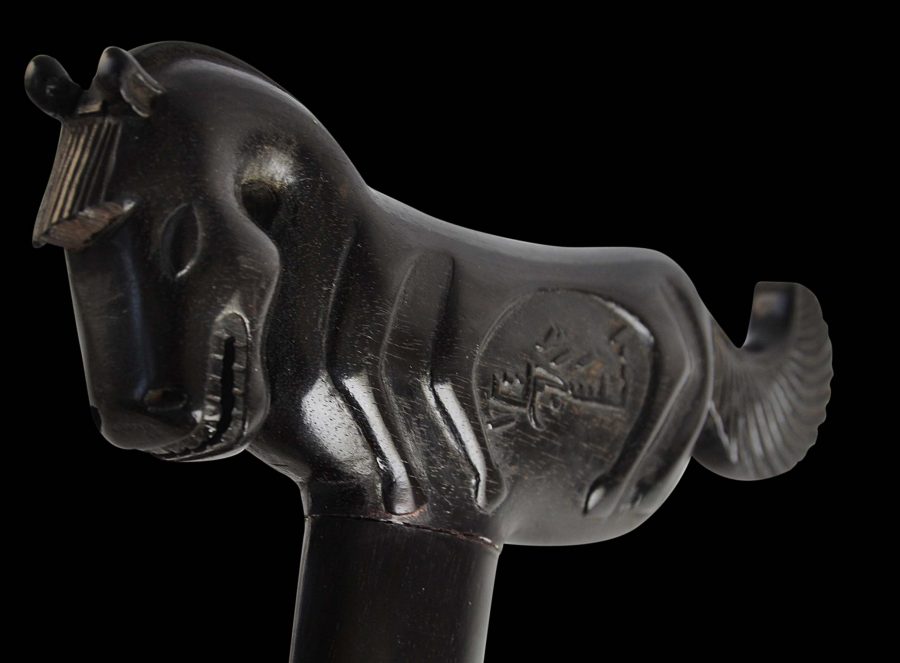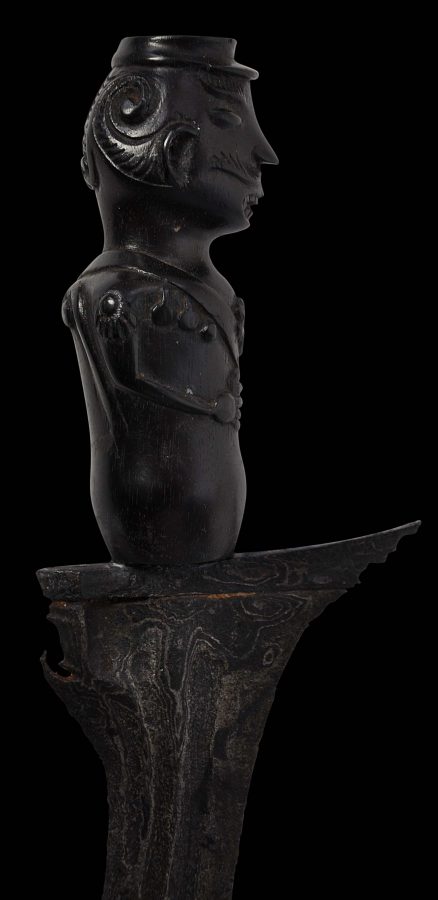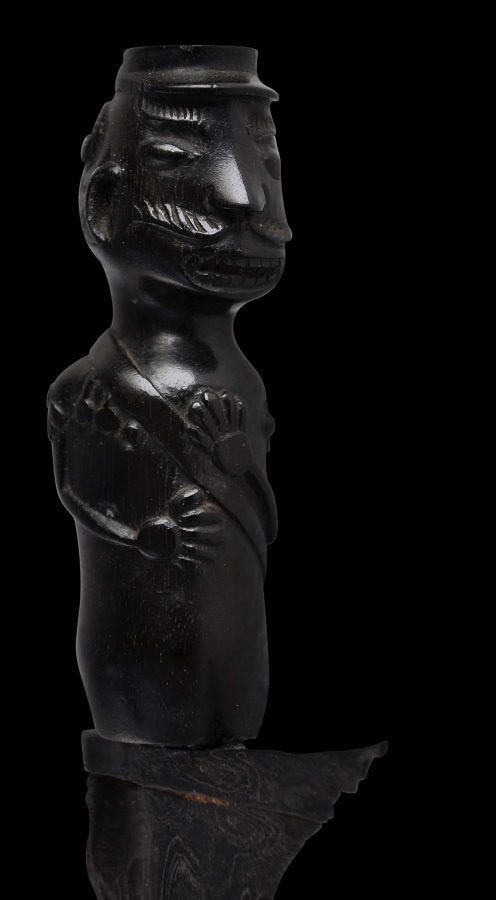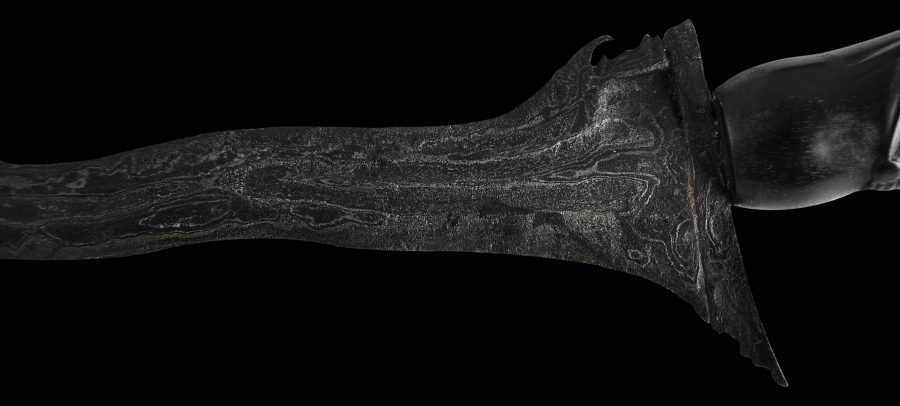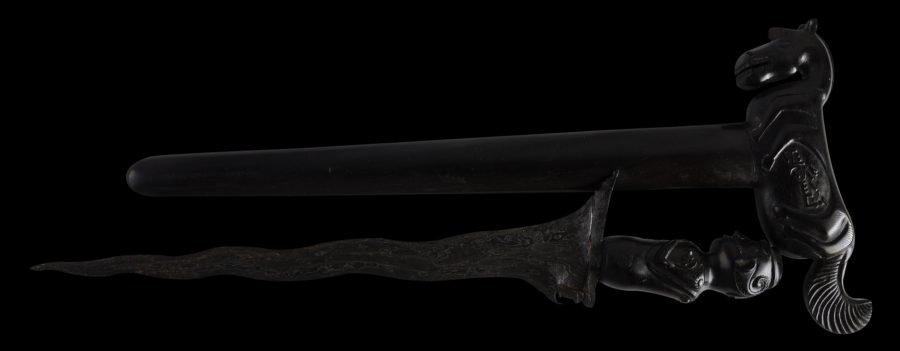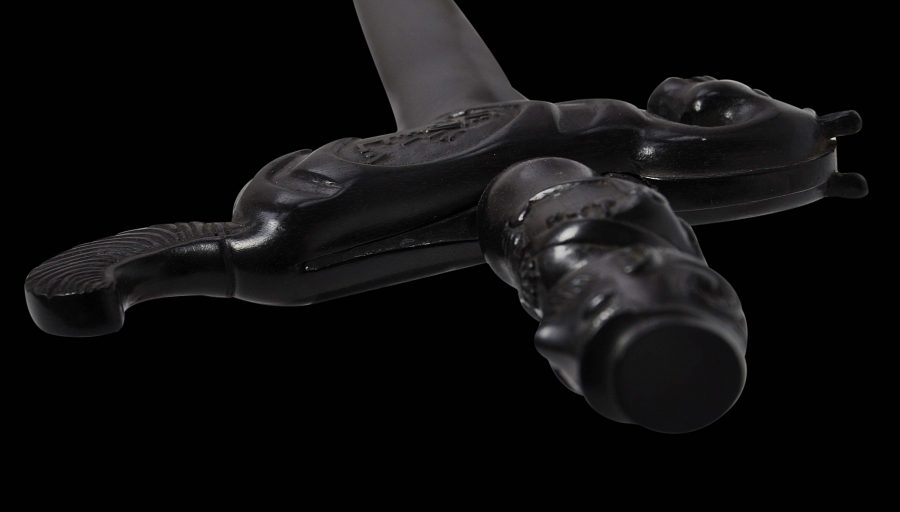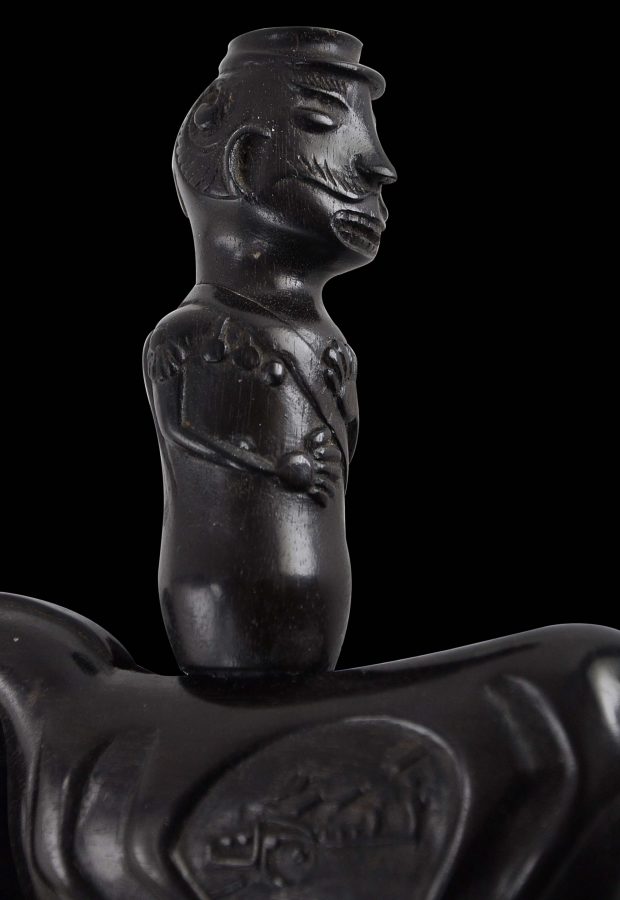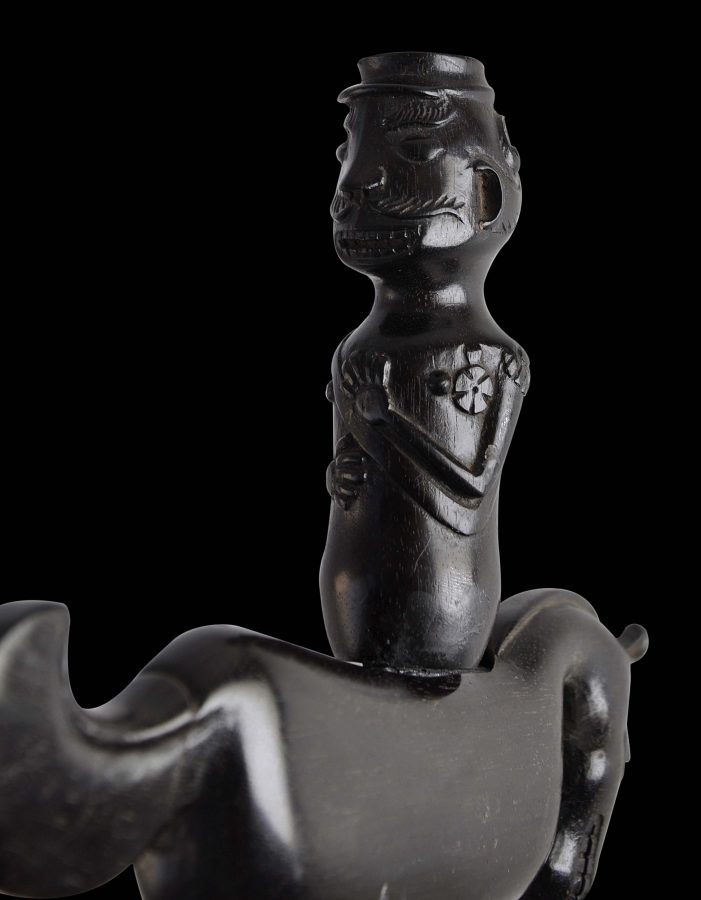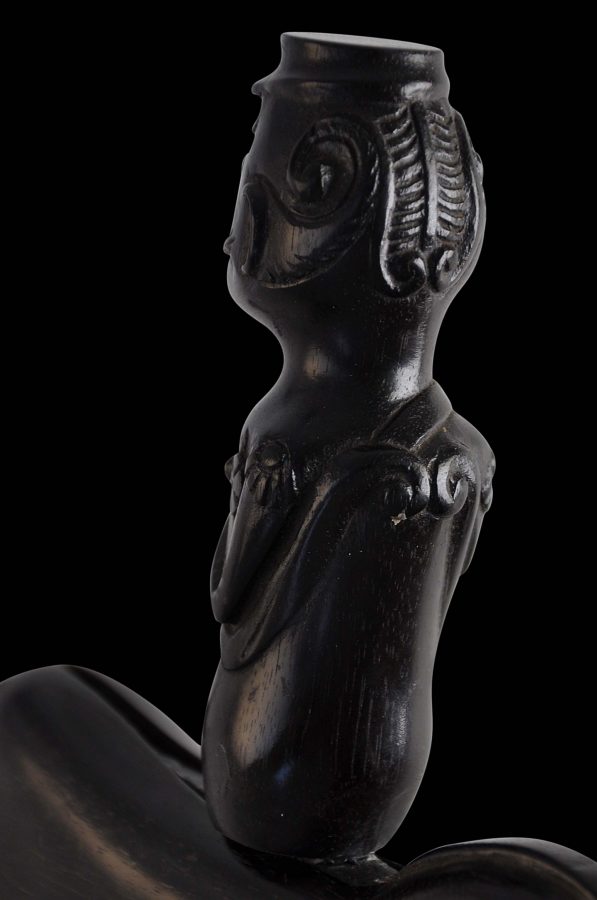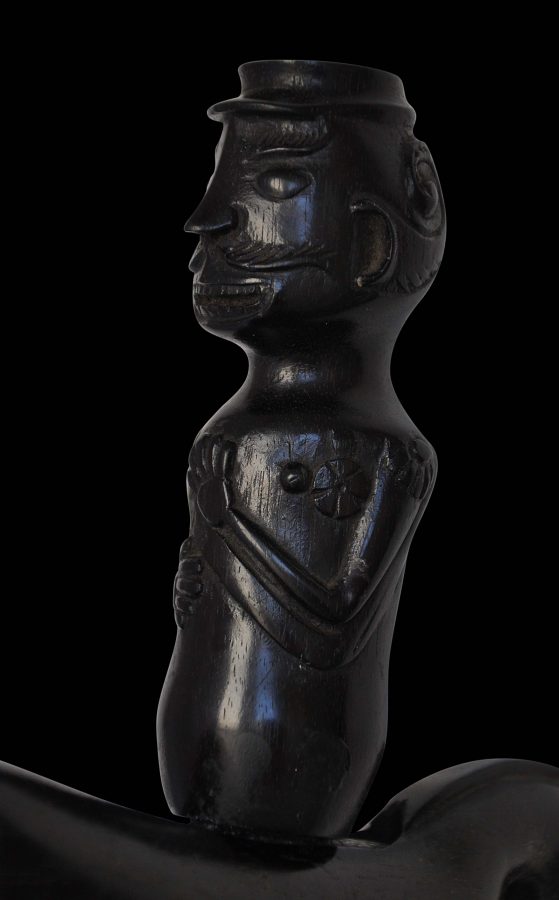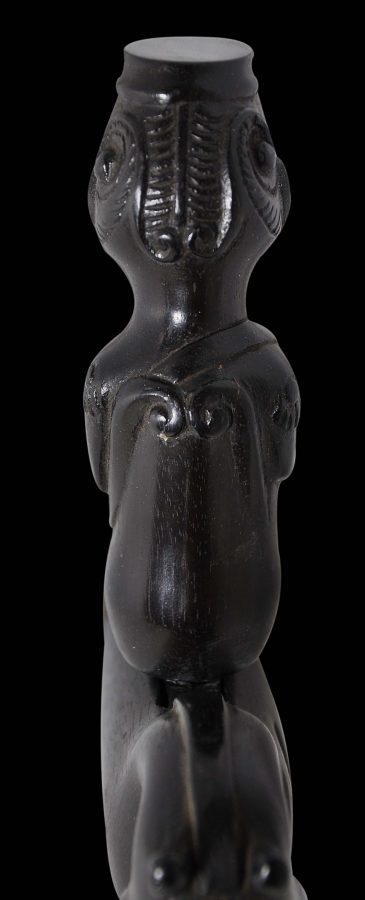This very unusual kris comprises a damascened iron blade, and an ebony scabbard and hilt. The ebony wood is particularly hard, black and glossy. It has a superb, rich patina.
The hilt is carved what appears to be a colonial Dutch resident or similar senior Dutch officer. He has a moustache, wears a kepi cap on his head, epaulettes on both shoulders, medals on the left side of his chest and a rosette (or perhaps a chivalric order medal) on the other, and a sash over his right shoulder and down his chest. The backs of his ears are carved with wayang-type curling flourishes, and the back of his head is similarly carved with a wayang-type flourish in place of hair.
The moustache might be an accurate depiction of a European at the time, or it might simply have followed Madurese stylistic convention: even senior native officials seem to have been depicted at the time with curling moustaches – see for example a drawing of the Patih (prime minister) and the Sultan of Madura (formerly Panembahan Cakraningrat V of Pamekasan) in which both figures have similar curling moustaches, reproduced in Carey (2008, p. 644).
On formal occasions, Dutch residents usually wore military-style dress with a sash, rosette, epaulettes and medals. (In the Dutch East Indies, Dutch residents and lower ranks such as assistant residents were appointed alongside the various indigenous rulers and princes.)
The cross-guard or wrangka has been carved as a horse, which the resident appears to be riding when the blade is in the scabbard. The horse’s head is bent low and its mouth open with a full mouth of teeth displayed. The large, luxuriant tail is flicked up.
Importantly, and unusually, the cross-guard is carved on one side in neat pegon script, which reads as ‘nasajati’ (‘na.sa.ja.ti’). Most probably, this is the owner’s name (‘Nasa Jati’ or ‘Nasir Jati’ would not be an uncommon Indonesian name; pegon is the localised version of Arabic used on Java and Madura which is similar to Jawi used by the Malays of Sumatra and the Malay Peninsula.)
The fact that the figure of the resident has been attached to the blade in such a way that he faces the back of his horse rather than the front could be a form of political comment on the part of the maker and owner of this kris. Or, the positioning of the handle has been reversed over time. It is however very fixed and does appear to have been set that way deliberately.
The blade is in fine condition and is free of rust or evidence of rust. The only significant chip to the carving of the scabbard and hilt is to the front of the mane of the hose which is shortened slightly with an old chip, otherwise the scabbard, hilt and blade are in an excellent condition.
References
Carey, P., The Power of Prophecy: Prince Dipanagara and the End of the Old Order in Java, 1785-1855, KITLV Press, 2008.
Menut, N., L’Homme Blanc: Les Representations de L’Occidental dans les Arts non Europeens, Editions du Chene, 2010.


